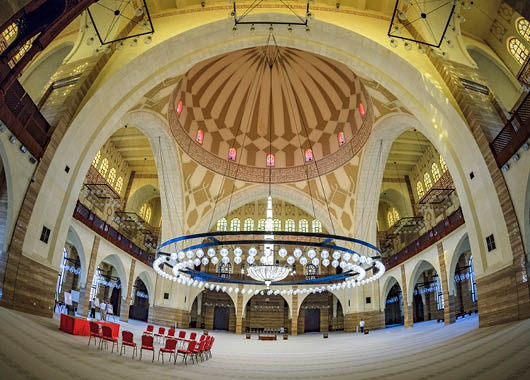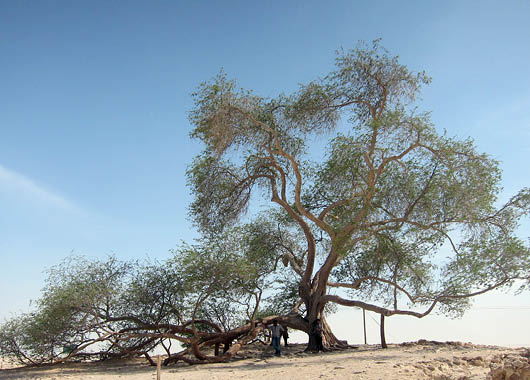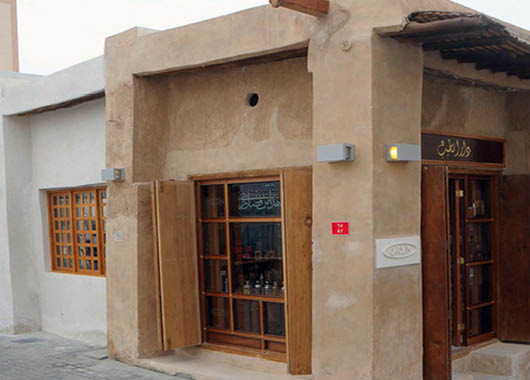
Bahrain, officially the Kingdom of Bahrain, is an island country in West Asia. It is situated on the Persian Gulf, and comprises a small archipelago made up of 50 natural islands and an additional 33 artificial islands, centered on Bahrain Island which makes up around 83 per cent of the country's landmass.
Bahrain is renowned for its verdant groves of date palms; since ancient times it has been an entrepôt for trade and a source of natural resources for the surrounding area. Bahrain Island is widely believed to be the site of the ancient kingdom of Dilmun, a commercial centre that traded with ancient Sumer.
Bahrain is a constitutional monarchy. The head of state is the king, and the head of government is the prime minister. The area has long been an important trading centre and is mentioned in Persian, Greek, and Roman references.
The island of Bahrain is renowned by the welcoming hearts of its population, a rich cultural and historical heritage, its economic diversity and endless opportunities. Lifestyle options are many and varied, and the country is known as one of the most forward-thinking and liberal in the Middle East.
The country has a well-developed education system that includes both public and private schools, as well as vocational and higher education institutions. Bahrain is also home to several international schools, providing options for expatriate and foreign students.

The Al-Fateh Mosque (also known as Al-Fateh Islamic Center & Al Fateh Grand Mosque) (Arabic: مسجد الفاتح; transliterated: Masjid al-Fatih) is one of the largest mosques in the world, encompassing 6,500 square meters and having the capacity to accommodate over 7,000 worshippers at a time. The mosque was built by the late Sheikh Isa bin Salman Al Khalifa in 1987 and was named after Ahmed Al Fateh. In 2006, Al-Fateh became the site of the National Library of Bahrain. The mosque is the largest place of worship in Bahrain. It is located next to the Al Fateh Highway in Juffair, which is a suburban neighborhood of Manama.

The Tree of Life (Shajarat-al-Hayat) in Bahrain is a 9.75 meters (32 feet) high Prosopis cineraria tree that is over 400 years old. It is on a hill in a barren area of the Arabian Desert, 2 kilometers (1.2 miles) from Jebel Dukhan, the highest point in Bahrain, and 40 kilometers from Manama. The tree is abundantly covered in green leaves. Due to its age and the fact that it is the only major tree growing in the area, the tree is a local tourist attraction and is visited by approximately 65,000 people every year.

Muharraq, the former capital of Bahrain, is known for its cultural splendor and traditional Bahraini houses litter the town’s narrow lanes. The Shaikh Isa bin Ali house is Bahrain’s most impressive example of Gulf Islamic architecture featuring four courtyards and beautiful carved wooden doors and perforated gypsum panels. The beautifully restored houses that make up the Shaikh Ebrahim Centre for Culture and Research provide an important insight into aspects of Bahrain’s heritage. From embroidery at Kurar House to pearling history at the Bin Matar House, the former home of a renowned pearl merchant, the houses reflect the Centre’s commitment to the preservation of both traditional architecture and history.

Located in the heart of Adliya, Block 338 is a charming pedestrian quarte crammed with international restaurants, art galleries and small boutiques. As Bahrain’s hot dining district, Block 338 offers a wide range of restaurants appealing to all ages and tastes, be it for a fancy meal, traditional Bahraini dish or just a soothing drink.

Central to life in Bahrain for centuries, pearl diving has to be the quintessential Bahraini experience. The beach resort of Al Dar Island offers regular pearl dives and cruises to Jarada Island where you might find yourself sunbathing on the spit of white sand and bobbing in its clear waters all on your own.

One of the oldest sections of the Muharraq Suq, Suq Al Qaisariya offers a charming shopping experience. Currently undergoing extensive restoration work by the Ministry of Culture, the first phase of the project, which has been completed, features a number of renovated shops, selling a variety of products ranging from pearls to spices and tea, as well as a traditional café - café Zaafaran – arranged around a number of historic madbassahs.

Arad Fort (Arabic: قلعة عراد, Qal'at 'Arad) is a 15th-century fort in Arad, Bahrain. Formerly guarding a separate island of its own, the fort and its surroundings have since been joined to Muharraq Island. Arad Fort was built in the typical style of Islamic forts during the 15th century before the Portuguese invasion of Bahrain in AD 1622. This fort has a beautiful history. A few feuds between the Islamic divisions of Bahrain have taken place here. This fort is one of the compact defensive forts in Bahrain. In its present location, it overlooks various sea passages of Muharraq's shallow seashores. In the past, there was an inaccessible marine channel which was controlled by the local people to prevent ships from breaking through to the island where the fort is located.